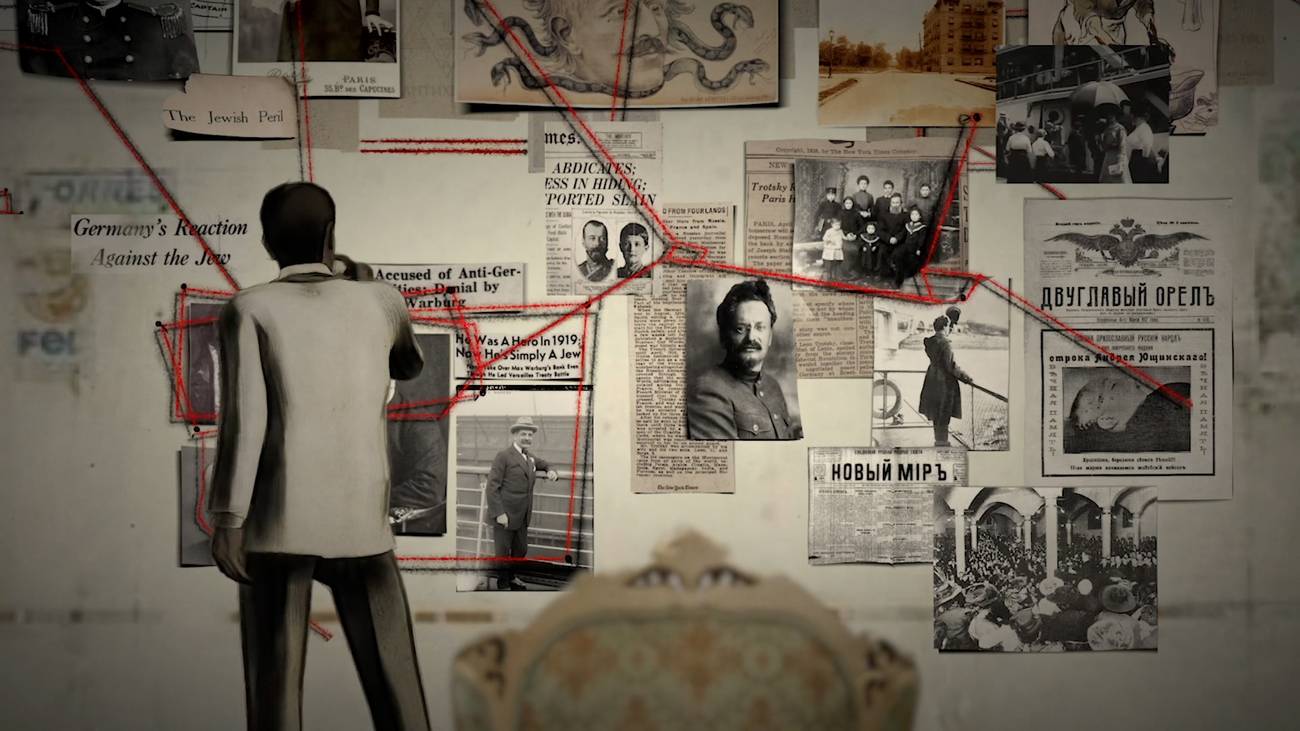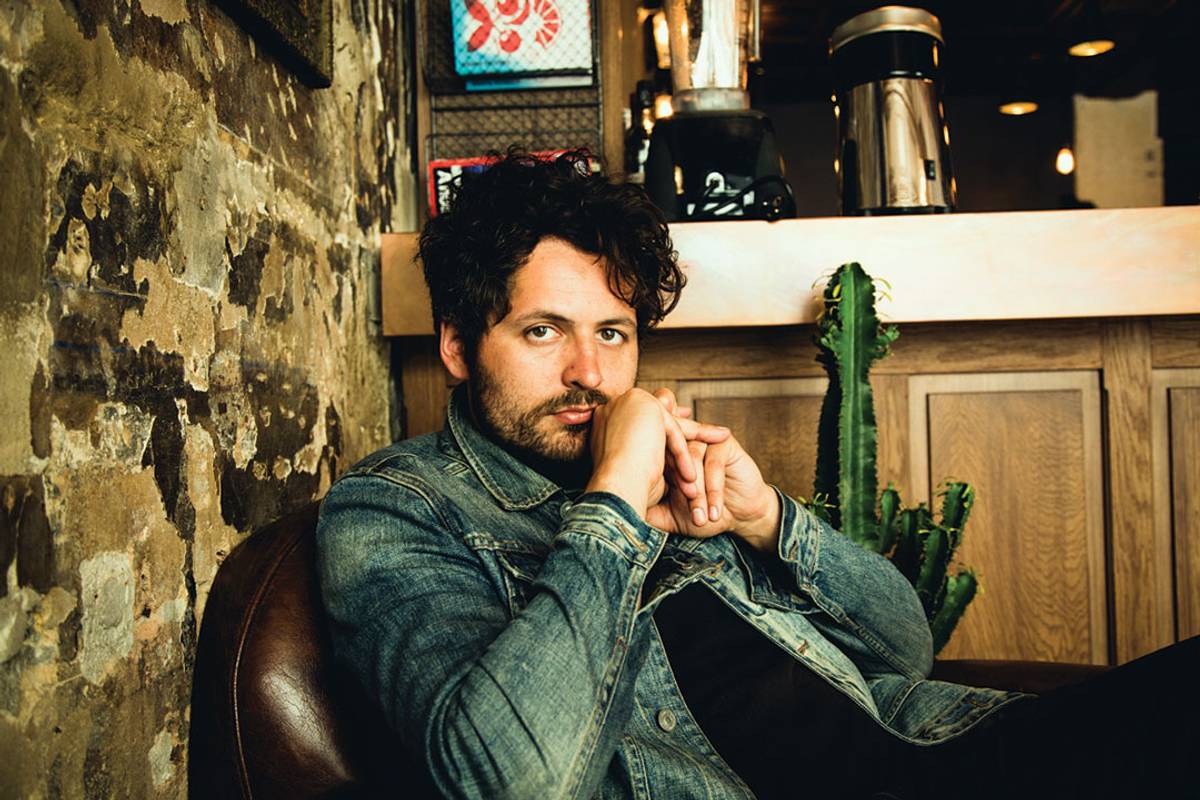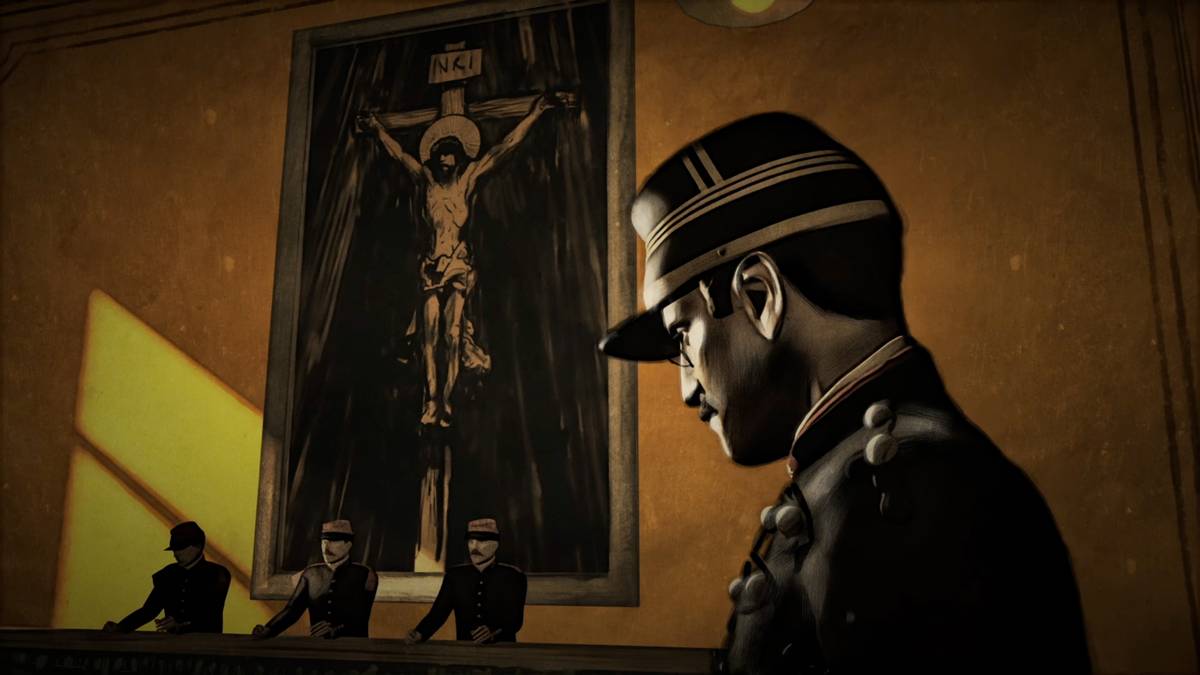Jewish Hate Hits the Silver Screen
A fascinating new documentary offers context about today’s antisemitism

The Film Collaborative

The Film Collaborative

The Film Collaborative
At America’s elite universities, Jewish students huddle in locked rooms as their fellow students demand the liberation of Palestine “from the river to the sea.” In an online forum at Cornell, threats are posted to shoot up the Center for Jewish Living and kosher dining hall. On campuses across the country, posters of kidnapped Israeli hostages, many of them children, are torn from walls and shredded. Headstones in Jewish cemeteries are defaced. The iconic Second Avenue Deli on Manhattan’s Upper East Side is graffitied.
The situation overseas is even worse. In London, Paris, and even Berlin, hundreds of thousands of demonstrators demand an end to Israel’s “apartheid” and “genocide” against Palestinians. Protesters in London pin photos of paragliders on their jackets as Hizb ut-Tahrir supporters in Sydney shout “gas the Jews.” A Jewish woman in France was stabbed in her apartment, a swastika spray-painted on her door.
For those seeking to understand the roots, persistence, and ferocity of this kind of Jew hatred in the West, it is the unlikely subject of a brilliant new animated documentary, The Conspiracy, that traces the origins of one of the world’s most enduring antisemitic myths: that Jewish bankers, businessmen, and media elites have secretly conspired to kill Christians and dominate the world.
This ambitious film explores the phenomenon of antisemitism through the families of three prominent European Jews: Alfred Dreyfus of France, Max Warburg, the German banker, and the Ukrainian Leon Bronstein, also known as Leon Trotsky. Their confrontation with this age-old animosity shaped not only their own lives but that of millions of people throughout the world.
The filmmakers’ decision to rely on animation to recount antisemitism’s complex history reflects the challenge of explaining one of the world’s oldest, most enduring hatreds to Americans, and especially to younger Americans. “We originally thought of telling the story through a “talking heads”-style documentary,” said Allison Stern, who helped finance and produce the film with her longtime friend, Caroline Hirsch. “But our director persuaded us that such a traditional approach to a feature-length film on antisemitism would be boring and would alienate younger viewers.” Dasha Bough, the film’s innovative animator, gave vivid life to this history. “I really don’t think the story could have been told any other way,” she said, and this hauntingly beautiful film makes a strong case that she is right.

THE FILM COLLABORATIVE
The film’s style is a thoughtful way to reach this most urgent audience: young people who now find themselves on the front line of debates about Israel and Hamas and the antisemitism that is rising in America and Europe. The Anti-Defamation League has reported over 100 anti-Israel rallies on American college campuses since Oct. 7, 27 of which have included expressions of support for Hamas terrorism. Students have walked out of class to oppose Israel at some 70 American campuses, 11 of which have included support for terrorism.
Overall, according to ADL data, antisemitic incidents in the U.S. have increased by almost 400% over an already elevated number the previous year—a historic surge.
In the midst of this surging hatred and violence against Jews, the filmmakers had a hard time deciding which eras and aspects of Jew hatred to emphasize. As historian Bernard Lewis wrote almost 20 years ago in The American Scholar, antisemitism has gone through three distinct phases.
The first phase—the demonization of Jews in earnest—began with the advent of Christianity and the special role assigned to Jews rather than the Romans for the crucifixion of Jesus. Because Christianity began as a movement within Judaism, the conflict between Christians and Jews, he wrote, had a “special bitterness that often makes conflicts within religions more deadly than those between religions.”
During this first phase, the hatred and persecution of Jews, as well as the ideology and terminology used to express that hatred, were grounded in religion. With the Enlightenment, however, religious prejudice was discredited as bigoted, or worse, out of date. “That meant that new reasons were needed for hating Jews,” Lewis wrote. They were quickly found.
‘Why wouldn’t Netflix or Apple or Amazon pick this up?’ she wondered. ‘Maybe it’s the subject matter. It makes people uncomfortable. People are afraid to talk, afraid to say anything even before Oct. 7.’
The second phase of Jew hatred began in Spain when Jews, and also Muslims, were forced to convert to Christianity. Forcible conversion however, sparked doubt, especially among the enforcers, about the sincerity of the converts. So the practice arose of examining these “new Christians” and their racial origins. “Only people who could prove Christian descent for a specified number of generations could be accepted as genuine Christians. This is where the racial form of anti-Semitism began,” Lewis wrote, an argument that was developed in even greater persuasive detail by one of the great scholars of the Spanish Inquisition, Benzion Netanyahu, Prime Minister Benjamin Netanyahu’s father.
After the Third Reich’s genocide against the Jews and its other crimes against humanity were revealed, racial hostility was also discredited, leaving what Lewis called “an aching void.” This is where the third phase of antisemitism emerged, what he called “political-cum-ideological-Judeophobia,” or the “new anti-Semitism.” “This Jew hatred, both political and ideological, provided a socially, intellectually acceptable “modern disguise for sentiments that go back some 2000 years,” he wrote.
This is the antisemitism so virulently on display today on American college campuses, on the nation’s main streets, and on social media.
The film is focused on these second and third phases of antisemitism, and its depiction of the Dreyfuses of France, the Warburgs of Germany, and Russia’s Bronsteins is full of riveting history and illuminating details. The story of Captain Alfred Dreyfus, the first Jewish officer in the French Army’s intelligence bureau, is, of course, well known. Wrongfully accused and convicted of treason in 1894 because of France’s widespread antisemitism, Dreyfus may not have won his freedom without the tireless efforts of his wife, Lucy, who waged a relentless campaign to exonerate her husband that eventually helped build sufficient public pressure to secure a presidential pardon. Dreyfus’ daughter Madeleine, the film also shows, was an active member of the Resistance in Nazi-occupied France. Arrested with other members of her cell, she, alone, was not released and was eventually sent to Auschwitz. “Madeleine’s fate was sealed by her name,” said Michel Dreyfus, who is interviewed toward the end of the film.
The film also sheds light on a fascinating period in the life of Max Warburg, the head of what was then Germany’s most prominent banking family. He helped some 80,000 German Jews flee the country to safety. While two of the Warburg sons immigrated to the U.S.. Max remained in Germany to try protect the family’s bank, a valiant, but ultimately futile effort.

The Film Collaborative
While Trotsky’s family were among the few Jews permitted to live beyond Russia’s Pale of Settlement and did not speak Yiddish at home, the film highlights his outrage over the treatment of Jews in Russia. In an incendiary speech, he accused the czar of funding the “Black Hundreds,” ultranationalists who staged pogroms throughout Russia. The government was paying for pogroms, Trotsky said, to distract workers from fighting for their rights. Russia was one of the few countries in Europe that refused to give Jews citizenship. Though he was not observant, “Trotsky made inequality and the violence directed at Jews a major point in his call for revolution,” Maxim Pozdorovkin, the film’s director, said. “His Judaism has been effaced for ideological reasons.”
The Conspiracy pays close attention to key purveyors of the antisemitic slanders and lies that fueled panic, pogroms, and in America, prejudice against Jews. Augustin Barruel, a French publicist and Jesuit priest in the 18th century, wrote influential books claiming that the French Revolution and democracy itself were a conspiracy to destroy the Church, Europe’s aristocracy, and the established order. Pavel Krushevan, a journalist, editor, publisher, and an official in imperial Russia, used this text to revive the 12th-century “blood libel” that Jews were killing Christian children to use their blood to make matzo. The first publisher of The Protocols of the Elders of Zion, the scurrilous literary forgery that described a purported 19th-century meeting of Jewish leaders plotting for world domination, Krushevan helped trigger the first pogrom in Kishinev, the fifth-largest Jewish city in the Russian Empire. Some 49 Jews were murdered, many Jewish women were raped, 600 shops were destroyed, and 1,500 homes burned.
As analytical reasoning and faith in truth erode, conspiracy replaces them. It’s getting worse and worse out there.
In the U.S., Boris Brasol, a lawyer, literary critic, and part-time State Department employee who had immigrated from Russia, updated and translated the Protocols. Befriending America’s leading antisemites, including Father Coughlin and Henry Ford, Brasol helped persuade Ford to serialize and publish them in the Dearborn Independent, Ford’s newspaper. For a time, the film notes, he headed a Ford-funded detective agency that spied on prominent Jews.
A striking omission from a film about antisemitism is any mention of Israel. That is perplexing, since at least one of its main figures had a substantial impact on the creation of the Jewish state.
Among the journalists covering the Dreyfus trial in Paris was a Jewish, Austro-Hungarian writer and political activist named Theodor Herzl. Shocked by the trial and the blatant antisemitism he found in the homeland of the French Revolution and “égalité,” Herzl became convinced that the answer to antisemitism was not assimilation but a state that Jews could call their own. In his later years, Herzl, the father of modern Zionism, said it was the Dreyfus affair that had made him a Zionist.
The omission of Israel, however, is no accident. “We didn’t want to give the Students for Justice in Palestine something else to complain about,” said Ms. Stern. “We just wanted to say: This is a film about history.”
Ms. Hirsch, who formed the production company with Ms. Stern four years ago to produce and finance the film, is also disappointed that it has not found a broader audience. “Why wouldn’t Netflix or Apple or Amazon pick this up?” she wondered. “Maybe it’s the subject matter. It makes people uncomfortable. People are afraid to talk, afraid to say anything now.”
This may be especially true in today’s Hollywood. When the Academy Museum of Motion Pictures opened last year in Los Angeles, for example, it was blasted for overlooking the role Jewish immigrants played in creating the film industry it was honoring. Though dozens of rooms and exhibits featured the industry’s diversity and inclusion, Harry and Jack Warner, Adolph Zukor, Samuel Goldwyn and Louis B. Mayer and other Hollywood founders were barely mentioned. Following an outcry, the museum vowed to open a new permanent exhibition this spring that focuses on the industry’s origins.

THE FILM COLLABORATIVE
It is thus ironic, but perhaps not surprising, that most of those connected with the project are Christian. While Ms. Stern and Ms. Hirsch are married to Jews, they are both Catholic. Animator Dasha Bough is Christian, and so is director Pozdorovkin. All of them said they hoped their film would eventually be seen by more Americans and that they were driven by this mission. Despite their limited budget (roughly $3.5 million) and the eruption of the COVID-19 pandemic during production, the filmmakers felt the urgent call of the moment. “Antisemitism is a virulent disease,” Pozdorovkin said. “And now it has gone truly global. As analytical reasoning and faith in truth erode, conspiracy replaces them. It’s getting worse and worse out there.”
The Conspiracy premiered last November and has been shown at several film festivals, including as a choice for the closing night of DOC NYC. Another screening is scheduled for Nov. 15 at Temple Emanu-El in Manhattan, and the film will be shown at the Miami Jewish Film Festival in January. But the film’s agent, Travis Tammero, of United Talent, declined to comment on why he thought the film has not found a major distributor. Nor would he explain what he has done, or hasn’t done, to promote it.
The topic, for better or worse, could not possibly be more timely. But perhaps that is part of the problem.
Judith Miller, Tablet Magazine’s theater critic, is a former New York Times Cairo bureau chief and investigative reporter. She is also the author of the memoir The Story: A Reporter’s Journey.